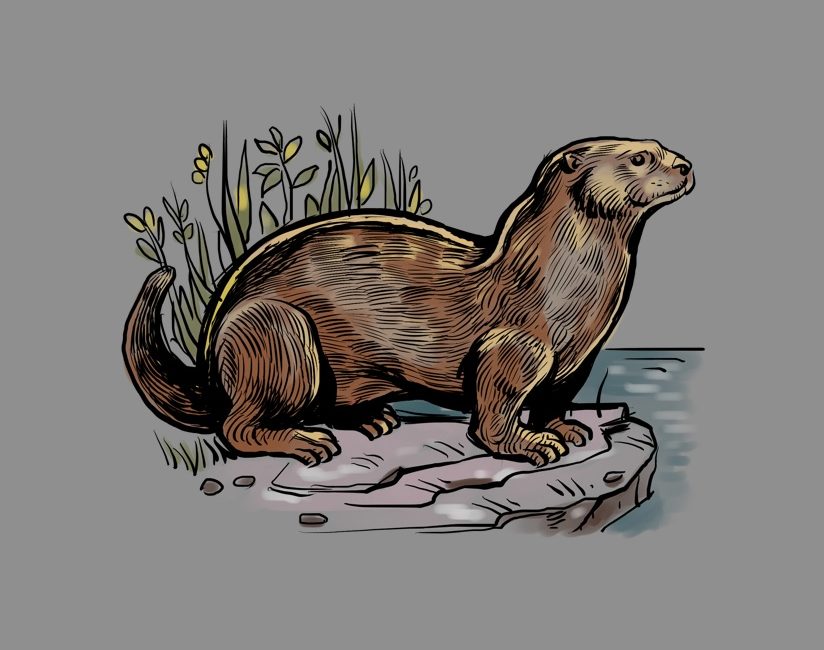
Eight Surprising Species Found In Or Along The White River
River Otter
Latin name: Lontra canadensis
Where to look: In the river, of course, especially at dawn or dusk because otters are most active then.
Fun fact: Otters weren’t always easy to find in Indiana. In 1995, the DNR began a reintroduction program for the species, and it wasn’t removed from the state’s endangered list until 2005. Now they’re found in most counties along the White River.
Queen of the Prairie
Latin name: Filipendula rubra
Where to look: These tall plants can grow up to five feet and prefer full sun, so look for them in wet, open areas like meadows.
When they bloom: June–August
Fun fact: An endangered species throughout much of its native region, Queen of the Prairie can’t self-fertilize like many plants do, so pollination and reproduction are difficult for the gorgeous flower.

Latin name: Anguilla rostrata
Where to look: Down. During the day, these eels like to stay under logs, boulders, or other cover. Freshwater eels are still somewhat rare in Indiana, but you might want to take a close look if you see something snakelike in the water.
Fun fact: Any eel you come across in Indiana is female. All freshwater eels head to some unknown location south of Bermuda to reproduce. While the males stay at the mouth of the river near the ocean, the females head upstream, where they live for as many as 20 years.

Latin name: Conium maculatum
Where to look: Often found in muddy areas near streams and ditches, hemlock’s lovely white flowers belie its toxicity.
Fun fact: This was the plant used to execute Socrates, and ingesting six to eight fresh leaves will kill an adult. The coniine in the plant causes paralysis, resulting in suffocation. You definitely don’t want your dog sniffing around the stuff.

Latin name: Chrysemys picta
Where to look: Like any turtle, they like to bask, so pay close attention to parts of logs that stick out into the sun. It’s one of the most common turtle species in the Midwest, so you’re pretty likely to spot one even if you’re not trying.
Fun fact: The oldest painted turtle fossils date back 15 million years.

Latin name: Calopogon tuberosus
Where to look: Sandy bogs or meadows. You’ll need eagle eyes to spot one, though. These are very rare, plus their size—sometimes only a few inches tall—doesn’t make them any easier to find.
When they bloom: June–August
Fun fact: It’s illegal to dig up a native orchid on federally owned lands, so if you see one, don’t even think about pulling out that spade. Your best bet for owning one of these beauties is the Wild Orchid Company (wildorchidcompany.com).

Latin name: Ardea herodias
Where to look: Along the river, the bird’s favorite local eatery. The heron isn’t rare, but they are solitary birds. So only one or two will hang out in the same area.
Fun fact: Thank the Audubon Society for the continued existence of these spectacular creatures. The group formed in 1896 to protest the use of feathers in women’s hats. In the early 1900s, bird hunters were paid $32 per ounce for feathers, and more than 100,000 birds (many of them herons) were killed each year.

Latin name: Quercus macrocarpa
Where to look: Everywhere. But they like to keep their distance from other plants, so they won’t be in any densely wooded areas. Take Trail No. 2 from the Mounds visitors center down to the river, and you’ll walk past a pair of massive old-growth bur oaks. Their 3-to-5-foot diameters indicate they’re about 350 years old.
Fun fact: Bur oaks are among the most fire-tolerant trees. Their unusually thick bark protects them.
This article published in our September 2017 issue on the White River, on stands now.






